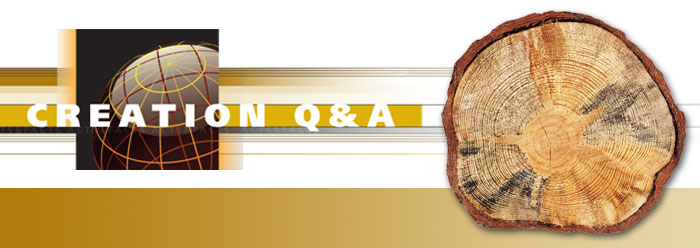Dating a tree sounds simple—just count the number of rings from the trunk’s outer edge to its center and you discover the number of years the tree was alive. Secular researchers have determined that a few rare trees have more rings than the number of years since Noah’s Flood. Debater Bill Nye recently used these tree studies to challenge the biblical timeline.1 Do they really disprove the Genesis chronology? Let’s do our homework and look at secularists’ technical reports about tree rings.
One states that “in a tree with no missing or false rings, a simple ring count can establish the date of a particular ring in a particular sample, provided the date of the outer ring is known.”2 Thus, trees might skip a ring or grow extra “false rings” in a given year. How can a researcher determine which rings truly represent whole years?
Researchers often crossdate trees to build a better chronology or history. “Crossdating, the matching of patterns of ring variation among trees, is the one immutable principle of tree-ring science. Any analysis that does not employ rigorous, replicable crossdating is not dendrochronological [tree-ring dating] in nature: counting rings does not afford the comparative validation necessary to produce absolutely dated ring sequences.”3 Thus, one cannot build reliable chronologies simply from counting tree rings.
But even crossdating does not always work. For example, “unfortunately, the low-elevation Huon pine[s] do not crossdate well and the ring-width chronologies that have been developed show a complex but weak temperature signal.”2 In other words, forest scientists sometimes have difficulty figuring out which ring features correspond to which temperature range or calendar year. And some tree rings are quite faint: “The ring that marked the change could not be dated directly in each core because some rings, especially those near the outer part of the trunk, are indistinct.”4
Indistinct or missing rings pose two problems, and extra rings present a third. “Sometimes more than one growth ring is produced in the same year.”5 And ring growth appears to be inconsistent: “Sometimes tropical trees that show cambial increment [woody growth] during each month of the year produce multiple growth rings, emphasizing the uneven utilization of carbohydrates.”6 But are growth rings consistently annual in temperate climates? “In some temperate trees that at times produce multiple rings, growth can occur in two or three periods, separated by brief intervals of dormancy. Dormancy of this type is classified as temporary, as it lasts a few days or a few weeks.”7 In other words, a tree can form a countable ring in a matter of weeks!
What causes a new ring? Winter conditions can, but so can droughts. “In study of high resolution wood property variation in Picea abies, an increase in wood density occurred (creating a false ring) in association with increased drought stress.”8 That was in Tasmania. But it was also found in Norway, where “wood density responded strongly to drought events, and a dry period in June 1996 induced false-ring formation.”9
Instead of calling it a “false ring,” maybe they should have called it a “false year.” Understanding that climate and other changes cause trees to produce more rings than the number of years they’ve been growing reconciles tree rings with biblical history. And given the wild climate swings since the Ice Age, there is every reason to expect extra rings in trees that began growing soon after the Flood.
References
- Thomas, B. Nye vs. Ham Debate: No True Scotsman. Creation Science Update. Posted on icr.org February 7, 2014.
- Drew, D. M. et al. 2013. Wood properties in a long-lived conifer reveal strong climate signals where ring-width series do not. Tree Physiology. 33 (1): 37-47.
- Taylor, R. E. and M. J. Aitken, eds. 1997. Chronometric Dating in Archaeology. New York: Plenum Press, 34.
- Sigafoos, R. S. 1964. Botanical Evidence of Floods and Flood-Plain Deposition. United States Geological Survey Professional Paper 485-A. Washington: US Government Printing Office, A20.
- Kramer, P. J. and T. T. Kozlowski. 1979. Physiology of Woody Plants. New York: Academic Press, 91.
- Ibid, 384.
- Fritts, H. C. 1976. Tree Rings and Climate. New York: Academic Press, 195.
- Drew, D. M. et al. 2009. High resolution temporal variation in wood properties in irrigated and non-irrigated Eucalyptus globulus. Annals of Forest Science. 66 (4): 406.
- Bouriaud, O. et al. 2005. Intra-annual variations in climate influence growth and wood density of Norway spruce. Tree Physiology. 25 (6): 651-660.
* Mr. Thomas is Science Writer at the Institute for Creation Research.




